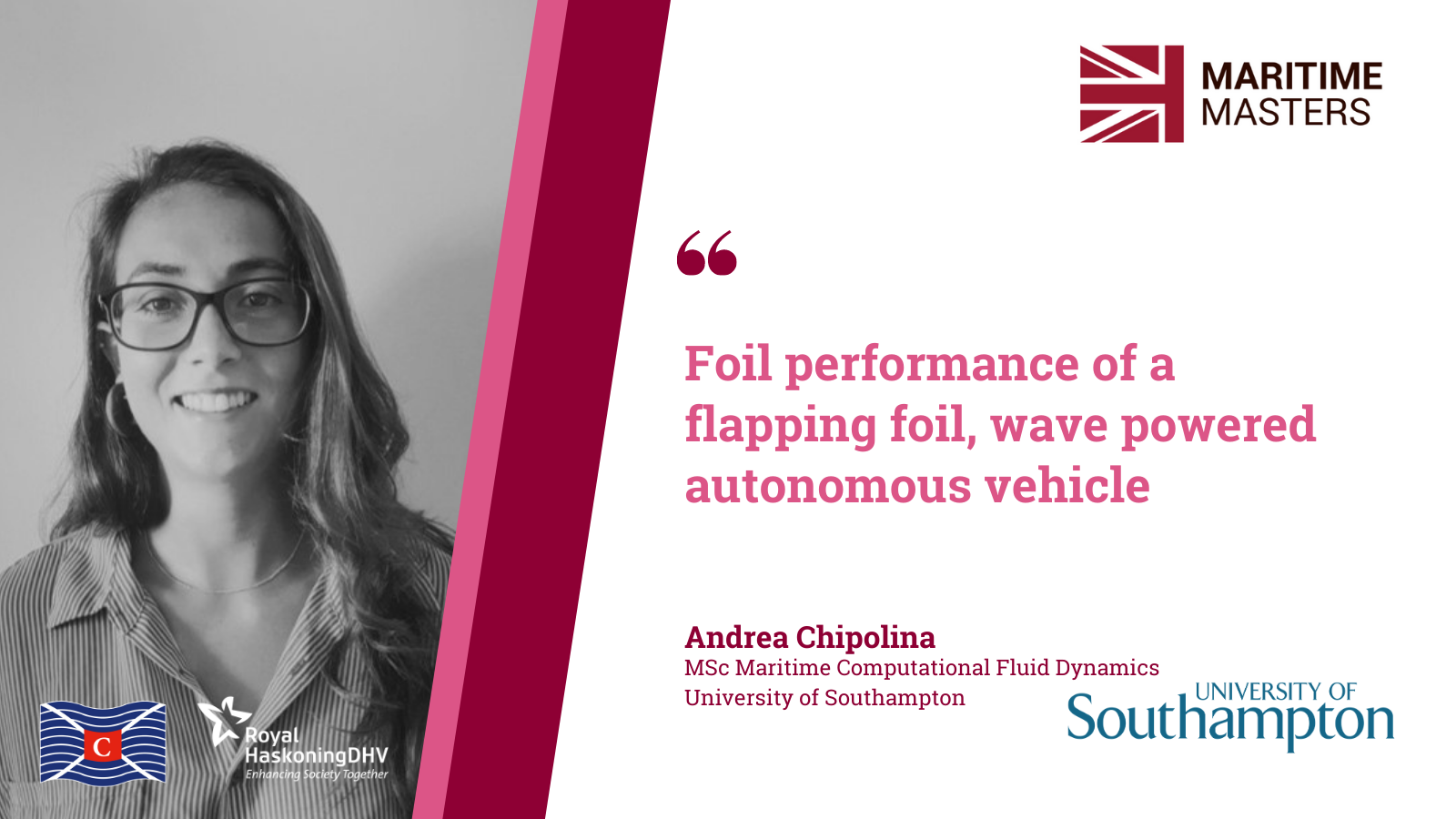2020 Winner: Andrea Chipolina

Download Andrea's research here.
Biography:
I am a Master’s degree student currently finalizing my project and looking forward to gaining a position in the marine industry. Passionate about resistance and propulsion of marine vehicles, and fluid dynamics from the very start of my degree
Prior to my MSc program, I graduated at Solent University with a BEng Yacht and Powercraft Design First Honours Degree. During my second-year summer period, I completed a two-month internship at Vectis Marine Design. Where I had the opportunity to work alongside experienced engineers and naval architects that guided me through common industry practices.
Fascinated by the variety of engineering topics required in the design and production of marine vehicles. And additionally, intrigued by the opportunity to improve the efficiency, environmental impact and durability of such. I consider myself a privileged person having had the chance to undertake an undergraduate and postgraduate course that combines my passion with the sea and an inspiring profession.
Introduction to research:
The optimization of propulsion systems remains to this day, a popular topic area of investigation in the marine industry. Furthermore, the current urgency to reduce environmental impact has triggered an interest in the use of renewable energy. Recent examples are Wavefoil, proposing the inclusion of retractable bow foils that could save 5-15% of fuel. The use of foils has also improved vessels of a smaller scale, such as autonomous surface vehicles (ASV). Interesting advancements have been achieved, with the use of wave propelled flapping foils. Examples of these vehicles include the Wave Glider by Liquid Robotics and AutoNaut’s 3.5 and 5.0 vessels.
Foils in tandem improve vessel stability and solve the issue of inconsistent thrust faced by a single foil. However, the aft foil is operating in forward foil wake, causing a reduction in efficiency. The aim of this project is to investigate the influence of wave orbital motion and foil interaction, of pitch driven wave propelled flapping foils. Fig.1, shows the mechanism for pitch induced wave propulsion and the hydrodynamic components considered in this study.
The study is divided into two sections. Beginning with the completion of a simplified 2D numerical simulation, based on linear wave theory and potential flow. The analysis was carried out for a range of wave frequencies and interfoil spacing. Results obtained show foil interaction could be considered negligible at approximately 100% (1/2 LWL % from LCG) interfoil spacing. Additionally, the evaluation shows that the reduction in aft foil performance is highly dependent on a decrease in pitch angle. This analysis led to the definition of a test matrix to undertake a more complex simulation with the use of Ansys Fluent (CFD). A 2D simulation was carried out, for a wave frequency of 4 radians and varying interfoil spacing. Results obtained show significant differences in foil thrust as spacing is varied and insight on the effect of foil pitch motion on aft foil performance.
What is your interest in or the practical applications of this research?
The completion of this project has given me the opportunity to enhance my knowledge on the application of computational fluid dynamics. The skills I have learnt throughout, are highly adaptable to a vast range of investigations, involving the use of CFD software. Furthermore, results obtained offer insight on the improvement of propulsive efficiency, of autonomous surface vehicles. Which in turn brings the possibility to adapt this type of propulsion system to other marine vehicles a step closer.
This study can be used as a reference by researchers not only investigating a type of propulsion system but also a method of wave energy extraction. Numerous studies have been published on the use of foils in tandem for energy extraction, as a form of electricity supply. Kinsey, T., & Dumas, G. (2012). ‘Optimal tandem configuration for oscillating-foils hydrokinetic turbine’, Journal of Fluids Engineering, is one of many examples.
As commonly known, all research-based projects require further work, opening a variety of projects for future students. This investigation would require a 3D CFD simulation in more detail, providing data that could be directly compared to previous studies such as Bowker, J. A. (2018). ‘Coupled Dynamics of a Flapping Foil Wave Powered Vessel.’ Testing different NACA foil sections would also provide insight on whether an improvement in foil performance occurs with the use of different foil geometries forward and aft.
Why did you choose maritime as your area of study and research?
I believe marine vehicles mark the origin and future of global transportation. Additionally, inspiring other sectors such as the design and construction of aircraft and floating architecture. Maritime engineering studies involve a combination of disciplines such as mathematics, physics and chemistry. Additionally, it requires extensive use of computational technology, which most industries currently depend on. The outcome being students graduating specialized in marine engineering but also highly prepared for a vast range of job opportunities in other sectors.
Regarding my choice of area of research, I have always been fascinated by fluid motion. Furthermore, the use of foils has increased in popularity the last decade. Not only in high-performance craft such as the AC75, but also in commercial and pleasure craft. Becoming a project of interest for a variety of industries.
